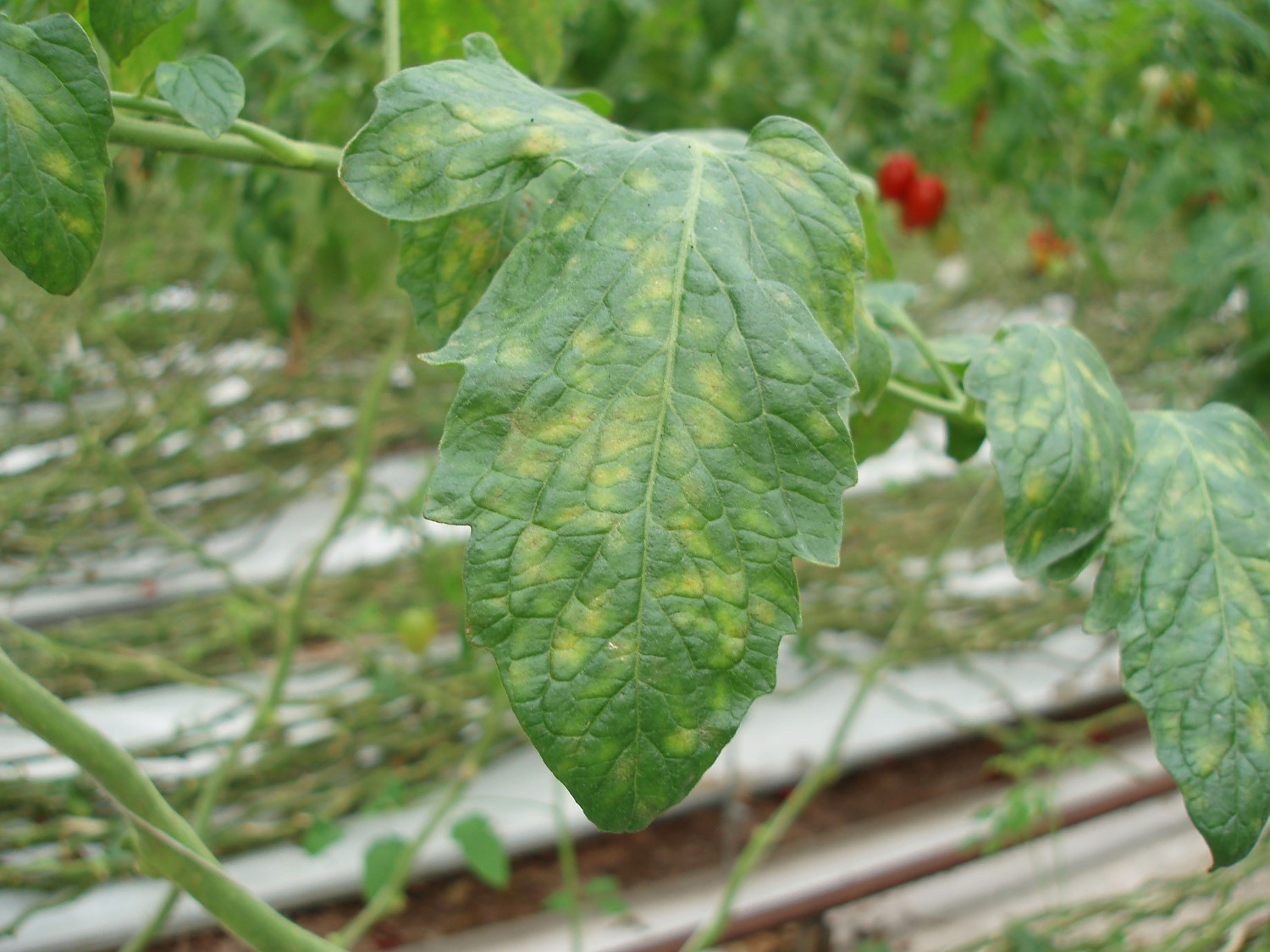Please click here to access the main AHDB website and other sectors.
- Home
- Knowledge library
- Tomato leaf mould
Tomato leaf mould
Find out about the symptoms and spread of this destructive disease. Read about how to control leaf mould and what varieties of tomato are resistant to it.
What is tomato leaf mould?
Tomato leaf mould, caused by Passalora fulva, is a foliar disease of significance in the UK.
It can be one of the most destructive foliar diseases of tomato when the crop is grown under humid conditions. Over recent years, it has reappeared in some UK crops and has persisted overwinter on a few nurseries between one crop and the next. Prevention of the disease by managing the glasshouse environment is much easier than managing the disease once an outbreak has occurred. If this disease is not kept in check it can severely affect crops and reduce yields.
These pages provide information on disease symptoms and epidemiology, as well as information on how to manage the disease using cultural and chemical measures, effective crop husbandry, varietal resistance and plant protection products.

Yellow spots occurring on the top side of a tomato leaf caused by tomato lead mould. Image copyright Dave Kaye, RSK ADAS
Cause, symptoms and spread
Detailed information on what causes the disease and how and why it can spread.
Control options
Knowing how and when to combat the disease is key. Understanding the importance of timing, hygiene and the implementing of environmental controls can help you prevent outbreaks before they occur.
Find out how to control tomato leaf mould
Chemical control and resistance management
As part of resistance-management spray programmes, industry-standard fungicides and biofungicides can be vital tools to help tackle the disease.
Discover more about the chemical strategies available
Spray application
Many control options are only as good as the equipment and techniques used to implement them.
Read more about spray equipment and application
Crop husbandry
Effective crop husbandry can dramatically decrease incidence and progression of tomato leaf mould.
Find out more about crop husbandry
Varieties resistant to leaf mould
It is important, wherever possible, to grow varieties with known resistance to the disease to counter its spread while maximising your crop yield.
Discover more on disease-resistant strains
Useful links
Download a PDF version of the Tomato Leaf Mould Best Practice Guide
Read our pages and access resources on protected edibles
Visit the Fungicide Resistance Action Committee (FRAC) for up-to-date information on resistance
Read the project reports from some of AHDB’s research on tomato leaf mould
If you would like to order a hard copy of the Tomato leaf mould best practice guide, please contact:
Email: publications@ahdb.org.uk
Telephone: 0247 799 0069
Tomato leaf mould web pages originally authored by Sarah Maybe and Dave Kaye (RSK ADAS).
Disclaimer
Biocidal and plant protection products must only be used in accordance with the authorised conditions of use. Regular changes occur in the authorisation status of biocides and plant protection products. For the most up to date information, please check with your professional supplier, BASIS registered adviser or the Chemical Regulation Division (CRD) of HSE (https://www.hse.gov.uk/crd/) before use.
While the Agriculture and Horticulture Development Board seeks to ensure that the information outlined below is accurate at the time of publishing, no warranty is given in respect thereof and, to the maximum extent permitted by law the Agriculture and Horticulture Development Board accepts no liability for loss, damage or injury howsoever caused (including that caused by negligence) or suffered directly or indirectly in relation to information and opinions contained in or omitted from this information.
Topics:
Sectors:
Tags:

